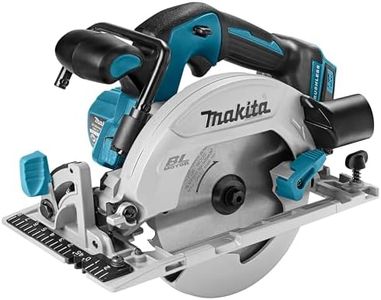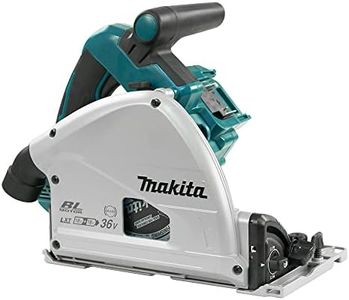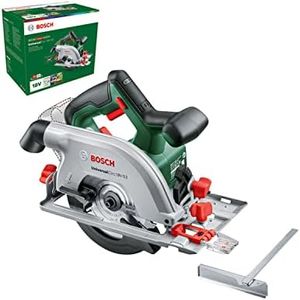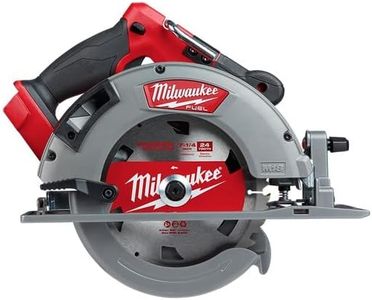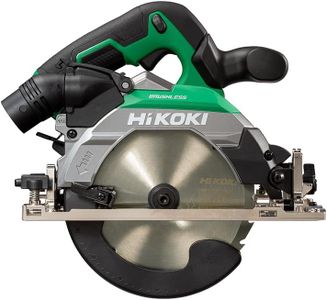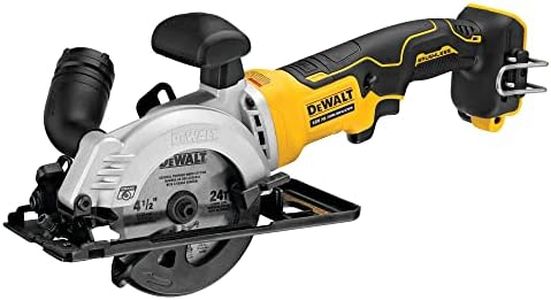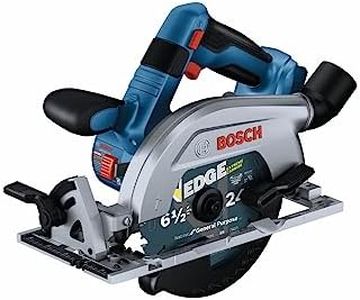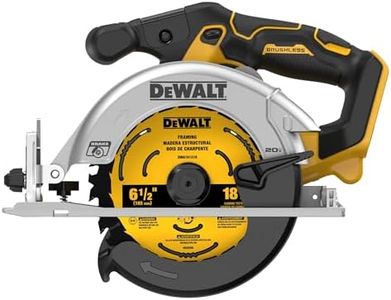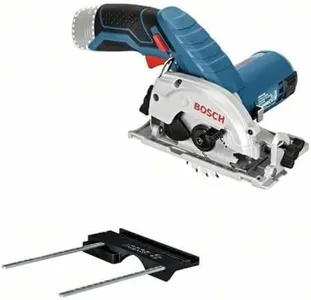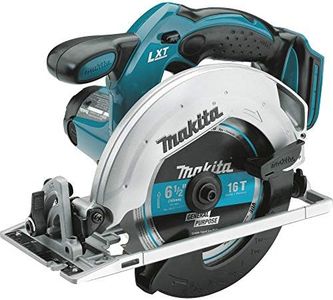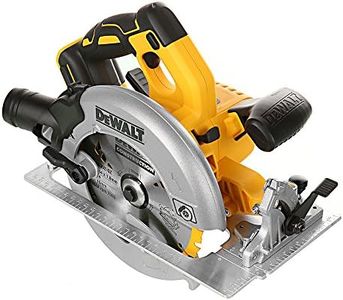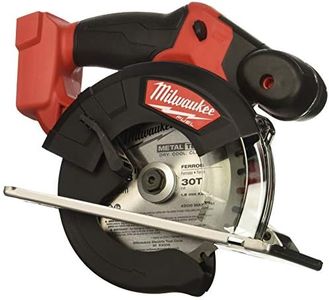We Use CookiesWe use cookies to enhance the security, performance,
functionality and for analytical and promotional activities. By continuing to browse this site you
are agreeing to our privacy policy
10 Best Cordless Circular Saws
From leading brands and best sellers available on the web.Buying Guide for the Best Cordless Circular Saws
Choosing the right cordless circular saw is all about understanding your needs, the kind of jobs you'll be doing, and how much convenience you want. Cordless tools give you freedom from power outlets, but it's important to make sure your saw is powerful enough and comfortable for you to use for extended periods. Pay attention to specs like battery voltage, blade size, and weight, as each can affect how well the saw works for different tasks. Think about what types of projects you’ll tackle most often—like cutting wood for DIY furniture or handling thicker construction materials—so you can match your choice to your demands and experience.Battery VoltageBattery voltage shows you how much power the saw can produce. Higher voltage means more cutting power, but also a heavier battery. Common ranges are around 12V for light duty, 18V to 20V for general use, and higher for heavy use. If you'll mainly do light trimming or smaller DIY projects, a lower voltage is usually enough and keeps the tool lighter. For more demanding tasks, like cutting thick lumber or frequent use, a higher voltage gives better performance.
Blade SizeBlade size determines both how deep you can cut and how versatile the saw is. Most cordless models use blades between 5-1/2 inches and 7-1/4 inches. Smaller blades are lighter and easier to handle, great for thin boards and quick jobs. Larger blades let you cut thicker materials and are more versatile for bigger projects. Choose a blade size based on the kinds of materials you expect to cut most often.
No-Load Speed (RPM)The no-load speed, listed in revolutions per minute (RPM), tells you how fast the blade spins when it's not cutting. Higher RPMs can mean faster, smoother cuts, especially in wood. Most saws offer speeds between 3,500 and 5,000 RPM. If you want cleaner cuts in a variety of materials, look for models with higher no-load speeds. For occasional, simple home use, an average RPM should suffice.
WeightWeight affects how easy it is to maneuver the saw, especially during long tasks. Lightweight saws are easier to carry and cause less fatigue, making them ideal for overhead or awkward angles. Heavier ones can be more stable but may be tiring to handle. Consider your strength, duration of use, and whether you'll often work on ladders or overhead when choosing the right weight.
Bevel CapacityBevel capacity shows how far you can tilt the saw blade from its normal vertical position. This is useful for making angled cuts for things like trim and framing. Most cordless saws offer at least a 45-degree bevel, with some going a bit further. If you anticipate needing angled cuts in your projects, look for a saw with easy and wide bevel adjustments.
Cutting DepthCutting depth is the maximum thickness the saw can cut through in one pass. This depends on blade size but is an important number because it determines what materials you can handle. Consider whether you'll mainly cut thin plywood, standard lumber, or thicker stock, and choose a saw where the cutting depth matches your needs.
Ergonomics and FeaturesErgonomics covers how comfortable and safe the saw feels in your hands, including the grip, balance, and how easily you can access controls. Some saws include special features like LED lights or dust blowers to improve your experience. If you'll be using the saw often or for long jobs, pay attention to how it feels in your hand and look for features that make the work easier.
